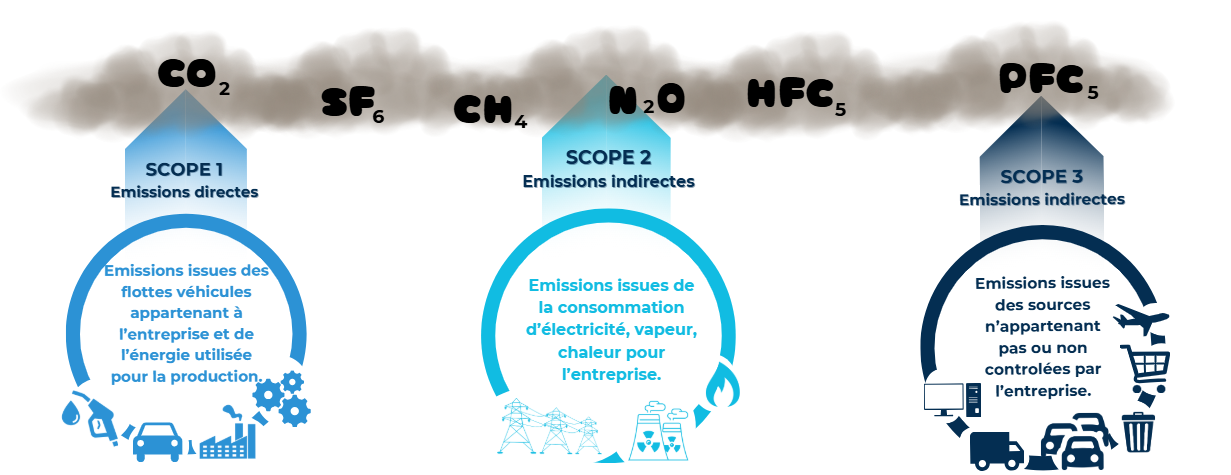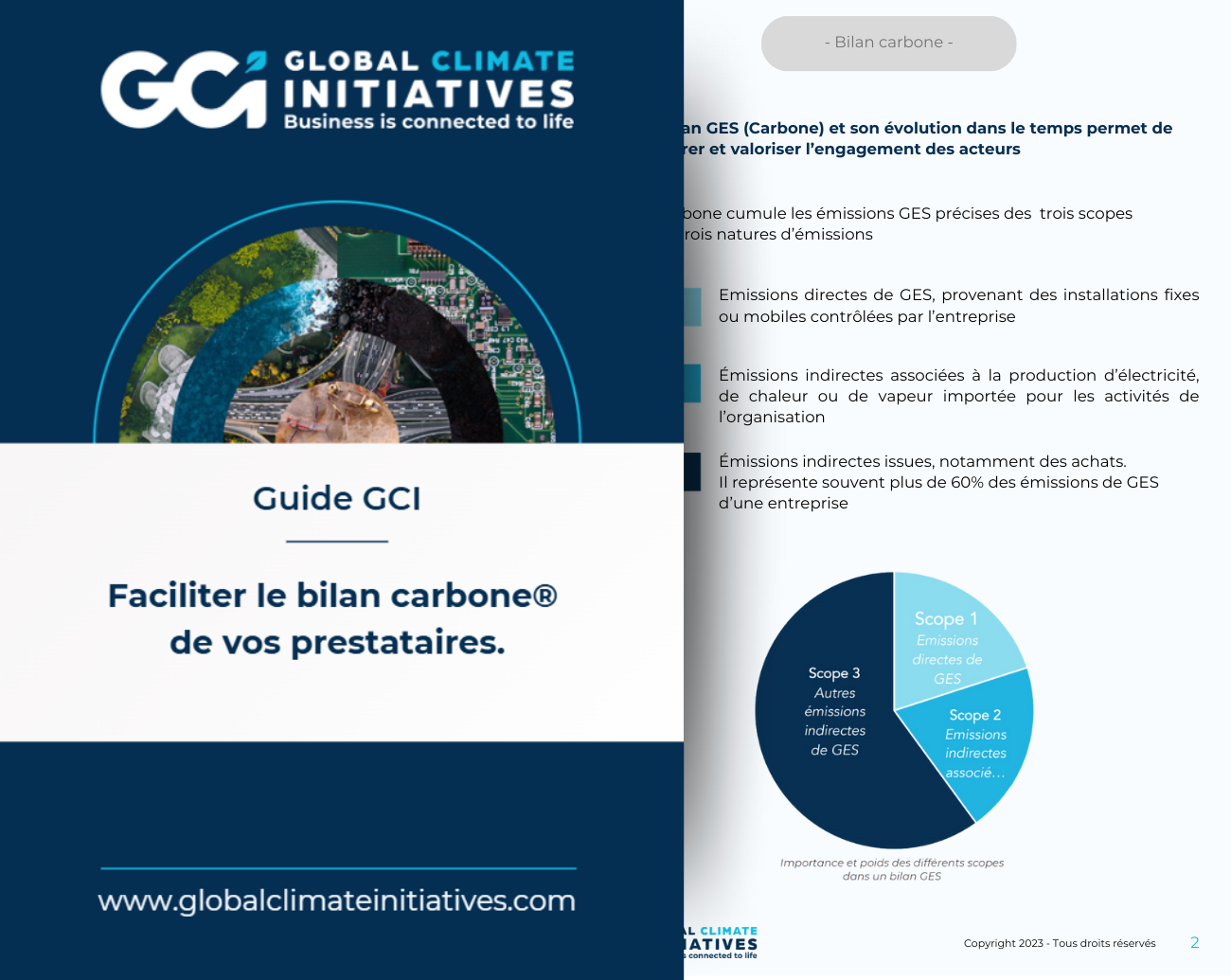CO₂ releases: a common expression... but scientifically inaccurate?

The term "CO₂ release" is ubiquitous in the media, climate reports and discussions on the ecological transition. Yet this expression is scientifically imprecise: carbon dioxide is not simply "released", but emitted during combustion processes (such as heating, transport or industry), contributing directly to climate disruption.
Despite this nuance, talking about CO₂ emissions raises awareness of the environmental impact of our activities on the climate. The word evokes a notion of invisible waste, contributing to atmospheric pollution.
In communication, words count. And while CO₂ release is not a rigorous explanation from a scientific point of view, it remains an effective benchmark in everyday language to designate greenhouse gas emissions. Using this expression contributes to a better understanding of carbon issues among a wide audience.
Combating climate change is a major global challenge. Carbon dioxide (CO₂) emissions play a central role in this global phenomenon. In France, a country committed to ecological transition, the average carbon footprint per capita was estimated at 9.4 tonnes CO₂ equivalent in 2023.
Globally, greenhouse gas emissions reached 52.6 billion tonnes CO₂ equivalent in 2021, up 4.2% on 2020. As detailed in the European EDGAR database, global emissions are mainly the responsibility of the major economic powers: in 2023, the top four emitters(China, USA, India and EU27) contributed over 55% of total direct emissions.
To meet the targets set by the Paris Agreement and limit global warming, it is essential to understand the sources of emissions - whether from the USA, China or other parts of the world - to implement reduction strategies, and to monitor our carbon footprint on a country-by-country basis.
1.1 Direct and indirect emissions
1.2 The main sectors concerned
2. Levers for reducing CO₂e emissions.2.1 Energy transition and efficiency
2.2 Low-carbon mobility and transport
2.3 Circular economy and resource optimization
3. Measure and track your carbon footprint3.1 Emissions calculation tools
3.2 Performance indicators and progress monitoring
3.3 Examples of companies that have reduced their CO₂e emissions
Understanding the sources of CO₂e emissions
To develop effective strategies for reducing greenhouse gas emissions, it is essential to understand the different sources of these releases. CO₂e emissions can be classified into two main categories: direct emissions and indirect emissions.
📊 Direct and indirect emissions
Greenhouse gas (GHG) emissions are classified into three categories, called scopes, which distinguish the sources of emissions associated with an organization's activities:
-
- Scope 1 Direct emissions : These emissions come from sources owned or controlled directly by the organization. They include, for example, the combustion of fossil fuels in fixed installations (such as boilers) or mobile installations (company vehicles), as well as industrial processes emitting GHGs.
- Scope 2 Indirect energy emissions: These are emissions associated with the production of electricity, heat or steam purchased and consumed by the organization. Although these emissions occur outside the company's boundaries, they are attributable to its electricity consumption.
- Scope 3 Other indirect emissions: This category covers all other indirect emissions resulting from the organization's activities. These include, for example, emissions linked to the production of goods and services purchased, upstream and downstream transport, business travel, the use of products sold, and waste management.

In a country like France, companies with over 500 employees are required to produce a Greenhouse Gas Emissions Balance (BEGES) every four years, covering mainly scopes 1 and 2. However, to obtain a global and complete view of their carbon footprint on the scale of global challenges, it is recommended to also include scope 3, as indirect emissions can represent a significant part of an organization's total environmental impact.
For precise, up-to-date data on direct and indirect emissions in France in the European and global context, we recommend consulting the reports of the French Agency for Ecological Transition (ADEME), which provides detailed information on GHG emissions by sector and by category, thus contributing to a global approach to the fight against climate change.
🏗️ The main sectors concerned
Several sectors are responsible for the majority of CO₂e emissions in France. Identifying these sectors is crucial to targeting reduction efforts.
-
- 🚛 Transport: This sector is the main emitter of greenhouse gases in France, accounting for around a third of national emissions. Emissions come mainly from private vehicles, heavy goods vehicles and air transport. To meet climate targets, the French government is aiming for a 31% reduction in transport emissions between 2022 and 2030.
-
- 🏭 Industry: French industry makes a significant contribution to CO₂e emissions, notably through the production of cement, steel and chemicals.
-
- 👷 Buildings: The residential and tertiary segment generates emissions mainly due to the heating of buildings, particularly those using oil- or gas-fired boilers. Replacing these systems with more environmentally-friendly solutions, such as heat pumps, is encouraged to reduce the carbon footprint in this area.
-
- 🌾 Agriculture: Although less of an emitter in terms of CO₂, the agricultural sector is responsible for other greenhouse gases, such as methane (CH₄) and nitrous oxide (N₂O). Reducing the use of nitrogen fertilizers and promoting agro-ecological practices are measures being considered to cut these emissions.
Understanding the distinction between direct and indirect emissions, as well as identifying the main emitting sectors, is fundamental to developing effective climate policies and achieving CO₂e emissions reduction targets in France.
Levers for reducing CO₂e emissions
To achieve the carbon neutrality targets set by France for 2050, it is essential to activate several levers to reduce GHG emissions. These levers mainly concern the energy transition, sustainable mobility and the circular economy.⚡ Energy transition and efficiency
- Development of renewable energies: Increasing the share of renewable energies in the electricity production system helps to reduce dependence on fossil fuels. The National Low-Carbon Strategy (SNBC) calls for a significant reduction in emissions from the energy sector.
- Improving resource efficiency: Optimizing energy consumption in buildings, industry and transport is crucial. Measures such as thermal insulation of buildings and modernization of industrial equipment contribute to this improvement.
🚗 Mobility and low-carbon transport
- Promoting public transport and soft mobility: Encouraging the use of public transport, cycling and walking reduces emissions linked to individual travel. The French government has set new targets for reducing greenhouse gas emissions in the transport sector.
- Fleet electrification: Replacing combustion-powered vehicles with electric ones reduces CO₂e emissions. French companies, such as those involved in the Climate Act, are committed to reducing their carbon footprint by adopting fleets of electric vehicles.
♻️ Circular economy and resource optimization
- Waste reduction and recycling: Establishing industrial processes aimed at minimizing waste and promoting recycling helps to reduce emissions linked to the manufacture of new materials. These practices limit emissions into the atmosphere while preserving water resources, as demonstrated by the European Union's environmental policies.
- Use of sustainable materials: Choosing materials with a low carbon footprint in the building sector - whether for construction, renovation or the manufacture of the components used (insulation, joinery, cladding, etc.) - can significantly reduce greenhouse gas emissions. The European regulatory framework, notably through the Directive on the Energy Efficiency of Buildings, imposes strict requirements in this area. The impact is far from negligible: in Europe, the building sector is responsible for around 40% of CO₂e emissions.
- Outlook for France and Europe: The gradual replacement of coal by renewable energies, encouraged by European policies, is contributing to this transition. France, like its European neighbors, must reconcile economic development with environmental protection, particularly of water resources.
These efforts are part of a worldwide drive to reduce emissions. The European Union is playing a pioneering role in this field, with ambitious climate targets that take account of the origin of emissions, whether they come from local manufacturing or imports.
Facilitate the GHG assessment of your providers
Measure and track your carbon footprint
To achieve CO₂e emissions reduction targets, it is essential to accurately measure one's carbon footprint and regularly monitor progress. This approach relies on the use of suitable calculation tools, the definition of relevant performance indicators.
🧮 Emissions calculation tools
- ADEME's Base Carbone: The Base Carbone® is an official public database developed by ADEME. It provides the emission factors needed to draw up greenhouse gas emission balances.
- Nos Gestes Climat: This online simulator enables individuals to estimate their carbon footprint according to their lifestyle, and suggests actions to reduce it.
Gaëtan COUREUL | Amaury Sport Organisation
A.S.O chooses GCI to assess the carbon footprint of its events, starting with the Tour de France.
Benjamin GRIZBEC | French Badminton Federation
The FFBad entrusts GCI with the carbon assessment of its activities, and continues with the GHG assessment of 20 affiliated clubs.
Christophe CHRISTEN | SCHMIDT Groupe
The Schmidt Group was able to enrol 80% of its suppliers (in terms of financial volume), and save 242 tonnes of CO2.
Marlène PIVARD | Natural Grass
Natural Grass was assisted by GCI's carbon experts in carrying out its first GHG emissions assessment.
📉 Performance indicators and progress monitoring
Once the carbon footprint has been assessed at the scale of an individual, a company or even a nation, it is crucial to define performance indicators to track the change in emissions released into the atmosphere or generated by imports. These indicators can include the total quantity of emissions (in tons of CO₂ equivalent), the carbon intensity per unit of production or sales, and the percentage reduction in emissions compared with a reference year.
🏅 Examples of companies that have reduced their CO₂e emissions.
-
- Amaury Sport Organisation (ASO): ASO, organizer of major sporting events such as the Tour de France and the Dakar, has undertaken a process to reduce its carbon footprint. In 2021, the company carried out its Greenhouse Gas (GHG) Assessment with the help of Global Climate Initiatives (GCI), identifying the main sources of emissions linked to its activities. This analysis has enabled ASO to establish targeted actions to reduce its CO₂e emissions.
-
- Schmidt Groupe: Specializing in interior design, Schmidt Groupe has integrated a low-carbon strategy by actively involving its suppliers. By carrying out its GHG assessment with Global Climate Initiatives, the company identified that 90% of its emissions were linked to its purchasing. This realization led Schmidt to work closely with its suppliers to reduce the carbon footprint of its supply chain.
-
- Natural Grass: Specializing in the development of hybrid turfgrasses for sports facilities, Natural Grass carried out its GHG assessment with GCI. This analysis enabled the company to gain a better understanding of the environmental impact of its products and services, and to identify levers for reducing its CO₂e emissions, thus reinforcing its commitment to the environment.
These examples illustrate how companies in different sectors can, by accurately measuring their carbon footprint and tracking appropriate performance indicators, establish effective strategies to reduce their CO₂e emissions and actively contribute to the fight against climate change.
Our carbon experts will be happy to give you a free free demonstration of our platform. 🚀
Sources
https://www.statistiques.developpement-durable.gouv.fr/edition-numerique/chiffres-cles-du-climat/fr/
https://www.ecologie.gouv.fr/politiques-publiques/suivi-emissions-gaz-effet-serre
https://concertation-strategie-energie-climat.gouv.fr/les-grands-enjeux-de-la-ppe-3
https://petitsfrenchies.com/climate-act-startup-environnement-empreinte-carbone/











